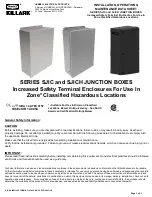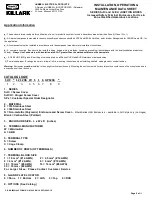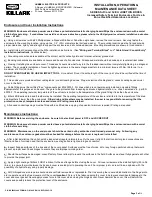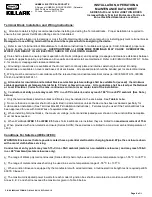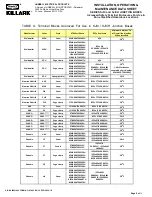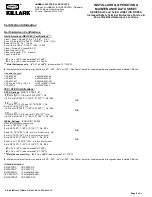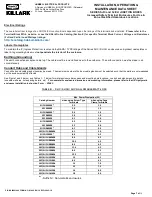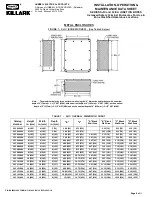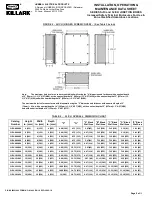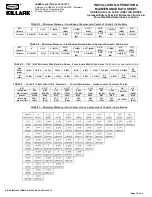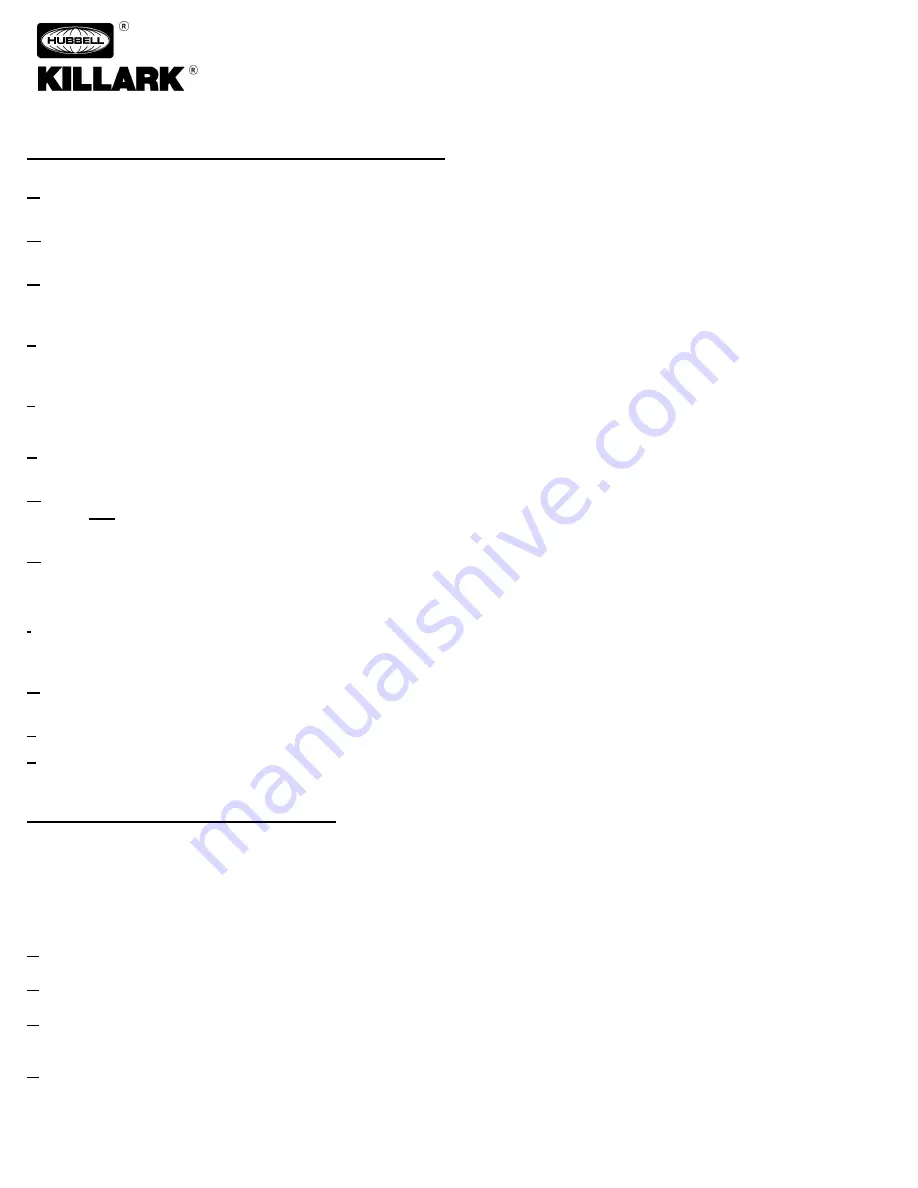
HUBBELL ELECTRICAL PRODUCTS
A Division of HUBBELL INCORPORATED (Delaware)
3940 Dr. Martin Luther King Drive
St. Louis, Missouri 63113 USA
INSTALLATION, OPERATION &
MAINTENANCE DATA SHEET
SERIES SJIC and SJICH JUNCTION BOXES
Increased Safety Terminal Enclosures For Use In
Zone Classified Hazardous Locations
P/N KIL00921446 FORM NO. K1446 R6/18 ECO-2-045-18
Page 4 of
10
Terminal Block Installation and Wiring Instructions:
a:
Attention to detail is highly recommended when installing and wiring the Terminal Blocks. Proper installation is required to
ensure the component Certification Ratings are not invalidated.
b:
Care should be taken not to damage or crack the DIN-Rail mounting clips when removing or installing polymeric terminal blocks.
Damaged or loose-fitting terminal blocks should be replaced before energizing the device.
c:
Refer to each Terminal Block Manufacturer's Installation Instructions for suitable wire types (ie: Solid, Stranded), proper wire
stripping lengths, and terminal torques.
OVERTIGHTENED or
LOOSE WIRE TERMINALS MAY CAUSE OVERHEATING,
WHICH CAN RESULT IN AN ELECTRIC SHOCK OR EXPLOSION HAZARD
.
d
Care shall be taken to ensure proper separation of circuits (voltages), and spacings (creepage and clearance distances between
live parts of opposite polarity, and between all live parts and dead metal) are maintained. Refer to IEC/EN/UL/CSA 60079-7, Table
2, for minimum creepage and clearance distances.
e:
Grounding connections are available at the din rail, earth continuity plate and internal- external ground stud. Bonding
connections are available on covers and boxes of all enclosures. All exposed metal should be bonded per local electrical codes.
f:
Wiring must be carried out in accordance with the relevant local and national electrical codes (ie: IEC/EN 60079-14, IEC/EN
61241-0 and IEC/EN 61241-1.
g:
All conductor insulation and terminal block service temperature ratings shall be suitable for (exceed) the minimum
ambient and maximum temperature (defer to T-Code) achieved in service. All conductors shall be sized per the National
or Local Electrical Codes for the max. continuous current or max. motor load of the installation.
h:
C
onductors at entry points may reach 73
o
C in a +55
o
C ambient, and may reach 108
o
C in a +90
o
C ambient (See Note j
below).
i
:
Only the terminal blocks listed on Killark certificates may be installed in the enclosures. See
Table A
below.
j:
No more than one conductor shall not be permitted in a wire terminal, unless the device has been evaluated specifially for
multiconductor installation (See Terminal Block Mfr's Installation Instructions). Ferrules may be used if the Terminal Block has
been approved for use with Solid Wires of equivalent diameter.
k:
When installing Terminal blocks, the maximum voltage, current and dissipated power shown on the Junction Box nameplate
must not be exceeded.
l:
When Weidmuller
WDU 1.5 or WDU 2.5
Series Terminal Blocks are installed, they are limited to a
maximum current of 15A
.
j:
When provided with a non-metallic enclosure (Series SJICN), these devices are limited to a maximum ambient temperature of
+60C.
Conditions For Safe Use (IECEx/ATEX):
WARNING: Enclosures that are powder coated have a potential electrostatic charging hazard. Wipe the enclosure down
with a moist cloth before servicing.
Conductors at entry points may reach 73
o
C in a +55
o
C ambient (metal or non-metallic enclosures), and may reach 108
o
C
in a +90
o
C ambient (metal enclosures only).
a: The range of Killark polymeric enclosures (Series HKH) shall only be used in a service temperature range of -55
O
C to +85
O
C.
b: The range of metal enclosures shall only be used in a service temperature range of -55
O
C to +135
O
C.
c: When Junction Boxes are equipped by the manufacturer with wired terminals, a routine electric strength test is required per EN
60079, Clause 6.1.
d: The maximum dissipated power in watts for each model of junction box shall be calculated in accordance with EN 60079-7,
Annex E, E.2, and shall not exceed the maximums given in Table 6 below.

